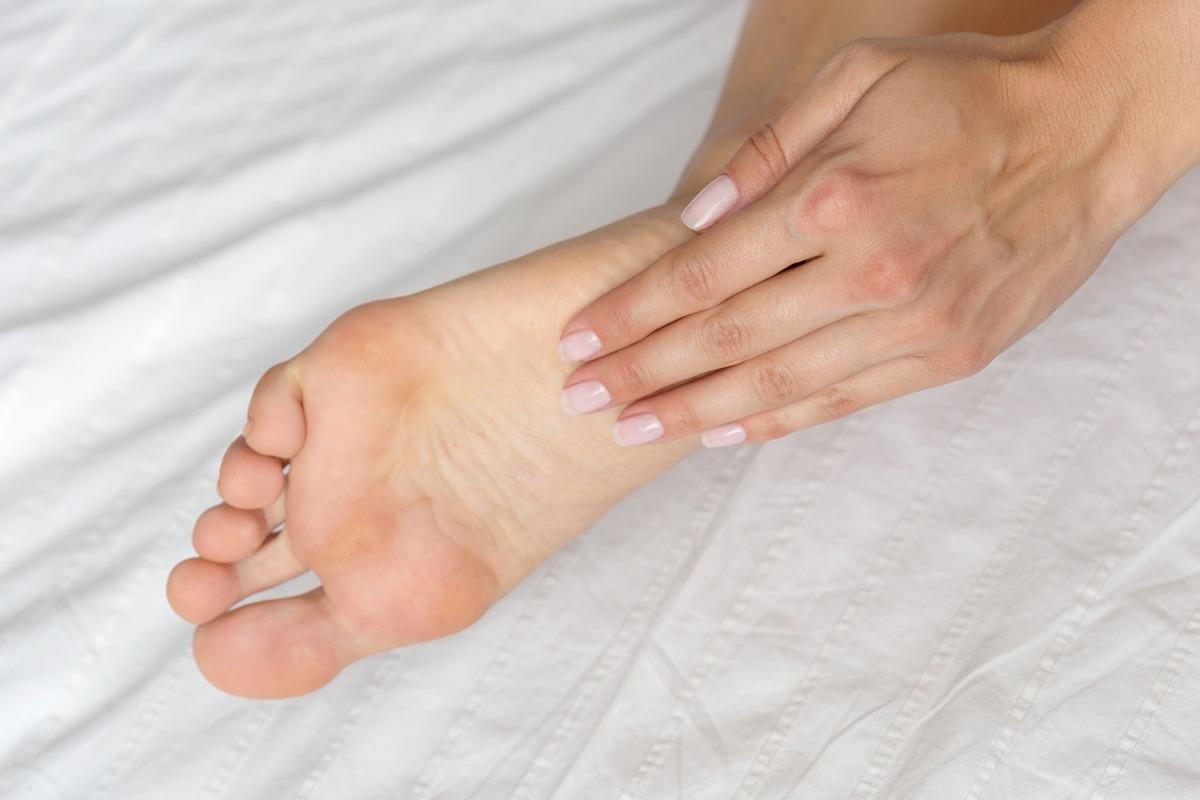What Is a Foot Contusion & How To Alleviate the Pain?

- posted: Feb. 12, 2024
Picture this: you're going about your day when suddenly, a sharp pain shoots through your foot. You might have foot contusions. Now, before panic sets in, let's break it down and understand what really goes on under the skin. Stick till the end of this blog, and you'll learn about treatment options, why these injuries happen, and how they manifest.
What Are Foot Contusions?
A foot contusion occurs when small blood vessels under the skin break or burst due to blunt trauma. This injury can happen due to muscle movement, direct impact, or other causes. The result is a painful black-and-blue mark.
But it's not just about the color changes on your skin; foot contusions can bring swelling and tenderness, making every step feel like you're walking on pebbles. Putting weight on that foot can range from uncomfortable to impossible.
The first step towards recovery is creating a personalized treatment plan based on your situation. Consulting with a healthcare professional who specializes in foot injuries, such as Dr. Hurst, can help you explore the best treatment options available.
Common Causes of Foot Contusions
Foot contusions can occur due to various reasons, such as dropping a heavy object on your foot, twisting your ankle, or experiencing a direct impact during sports activities. Repetitive muscle movement, like in long-distance running, can also lead to foot contusions.
If your foot looks bruised, swollen, and feels tender, you might be dealing with a foot contusion. The hallmark bruising that spreads out across the injured area is a telltale sign. Other symptoms include pain when putting weight on your foot and swelling that makes your shoe feel tighter than usual.
Initial Assessment and Immediate Pain Relief Methods
If you suspect a foot contusion, it's important to give it a thorough examination. Your well-being is our priority, and we want to address your concerns with care and precision. We recommend applying an ice pack to the injury site to provide immediate pain relief. Remember to wrap the ice pack in a cloth before applying it to your skin to prevent any potential damage.
Additionally, resting with your foot elevated and considering over-the-counter pain relievers, if necessary, can help alleviate discomfort and support your recovery process.
When To Consult Dr. Hurst or Another Healthcare Professional
While home remedies can provide temporary relief, they can do little to ease the pain. If the swelling continues to worsen, or you notice shades of purple and blue discoloration on your foot, you need to consult with a healthcare professional like Dr. Hurst. He can provide the necessary guidance and treatment options for you.
Long-Term Management and Recovery Tips
Recovery from a foot contusion requires a long-term approach. Resting your foot and keeping weight off it is essential for healing. Additionally, ice therapy with the use of an ice pack can effectively reduce swelling and provide relief. However, it's important to remember that the recovery journey doesn't end there.
Gradually incorporating strengthening exercises under the guidance of a healthcare professional can boost your recovery and help restore your foot's strength and mobility.
Taking Steps Towards a Full Recovery
Foot contusions can be troublesome, causing pain, swelling, and discoloration. However, with the right treatment plan and proper care, including the use of an ice pack, you can alleviate discomfort and promote healing. Consulting with a healthcare professional can help you develop a personalized treatment plan and guide you through the recovery process.
Remember to prioritize your recovery and be patient, as rushing can lead to setbacks. With time and proper care, you'll be back on your feet in no time.

- posted: Feb. 12, 2024
Picture this: you're going about your day when suddenly, a sharp pain shoots through your foot. You might have foot contusions. Now, before panic sets in, let's break it down and understand what really goes on under the skin. Stick till the end of this blog, and you'll learn about treatment options, why these injuries happen, and how they manifest.
What Are Foot Contusions?
A foot contusion occurs when small blood vessels under the skin break or burst due to blunt trauma. This injury can happen due to muscle movement, direct impact, or other causes. The result is a painful black-and-blue mark.
But it's not just about the color changes on your skin; foot contusions can bring swelling and tenderness, making every step feel like you're walking on pebbles. Putting weight on that foot can range from uncomfortable to impossible.
The first step towards recovery is creating a personalized treatment plan based on your situation. Consulting with a healthcare professional who specializes in foot injuries, such as Dr. Hurst, can help you explore the best treatment options available.
Common Causes of Foot Contusions
Foot contusions can occur due to various reasons, such as dropping a heavy object on your foot, twisting your ankle, or experiencing a direct impact during sports activities. Repetitive muscle movement, like in long-distance running, can also lead to foot contusions.
If your foot looks bruised, swollen, and feels tender, you might be dealing with a foot contusion. The hallmark bruising that spreads out across the injured area is a telltale sign. Other symptoms include pain when putting weight on your foot and swelling that makes your shoe feel tighter than usual.
Initial Assessment and Immediate Pain Relief Methods
If you suspect a foot contusion, it's important to give it a thorough examination. Your well-being is our priority, and we want to address your concerns with care and precision. We recommend applying an ice pack to the injury site to provide immediate pain relief. Remember to wrap the ice pack in a cloth before applying it to your skin to prevent any potential damage.
Additionally, resting with your foot elevated and considering over-the-counter pain relievers, if necessary, can help alleviate discomfort and support your recovery process.
When To Consult Dr. Hurst or Another Healthcare Professional
While home remedies can provide temporary relief, they can do little to ease the pain. If the swelling continues to worsen, or you notice shades of purple and blue discoloration on your foot, you need to consult with a healthcare professional like Dr. Hurst. He can provide the necessary guidance and treatment options for you.
Long-Term Management and Recovery Tips
Recovery from a foot contusion requires a long-term approach. Resting your foot and keeping weight off it is essential for healing. Additionally, ice therapy with the use of an ice pack can effectively reduce swelling and provide relief. However, it's important to remember that the recovery journey doesn't end there.
Gradually incorporating strengthening exercises under the guidance of a healthcare professional can boost your recovery and help restore your foot's strength and mobility.
Taking Steps Towards a Full Recovery
Foot contusions can be troublesome, causing pain, swelling, and discoloration. However, with the right treatment plan and proper care, including the use of an ice pack, you can alleviate discomfort and promote healing. Consulting with a healthcare professional can help you develop a personalized treatment plan and guide you through the recovery process.
Remember to prioritize your recovery and be patient, as rushing can lead to setbacks. With time and proper care, you'll be back on your feet in no time.
Main Location
5729 Centre Square Dr,
Centreville, VA 20120
Monday
7:30 am - 4:00 pm
Tuesday
7:30 am - 4:00 pm
Wednesday
7:30 am - 4:00 pm
Thursday
7:30 am - 4:00 pm
Friday
7:30 am - 3:00 pm
Saturday
Closed
Sunday
Closed
